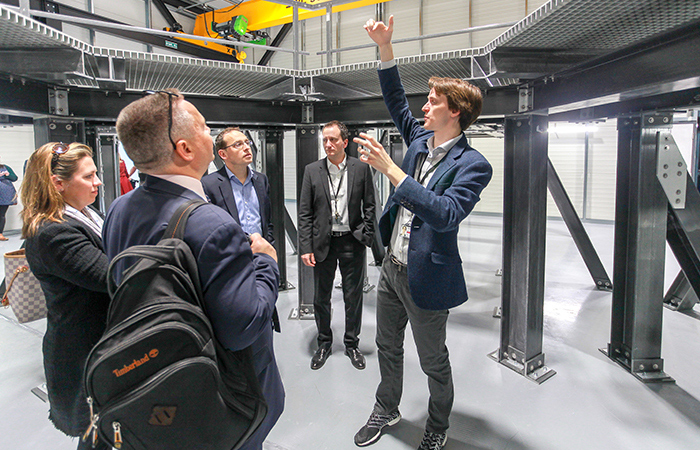Crustaceans have inspired innovative developments from super-strong composite materials to a camera for detecting cancer. Could they show us how to gain energy from fusion?
Energy gain from fusion – the process that powers stars – is a prize that has eluded many brilliant engineering minds. While the physics is relatively simple, it’s challenging to replicate the massive pressures and temperatures required while keeping generation costs at an economically viable level.
A UK startup that emerged from the engineering department of the University of Oxford, First Light Fusion, is working to find this balance with a new fusion process based on the shockwave-producing abilities of the pistol shrimp.
Shockwave supernova
With a click of its claw, the pistol shrimp can transmit a shockwave through the ocean and stun prey. The water around it’s claw forms a cavity, and the air and water inside is super-heated to form a plasma.
This process is known as inertial confinement, a natural phenomenon only otherwise seen in supernovas. It differs quite significantly from external confinement of plasma in complex fusion machines such as France’s International Thermonuclear Experimental Reactor (ITER) (in which Australia’s nuclear agency ANSTO is a partnering organisation) and Germany’s Wendelstein 7-X stellarator.
“Instead of there being this big external force of these huge magnets that are holding the plasma together, for inertial fusion there’s not any external force holding the plasma together,” Nicholas Hawker, co-founder and CTO of First Light Fusion told The Engineer.
Hawker said the plasma is held together by its own inertia.
“If you imagine the bit of plasma in the middle, it can’t release its pressure until the bit next to it has released its pressure, and that can’t be released until the one on the outside has,” he said.
Inertial confinement creates the extreme conditions needed for fusion in a tiny ‘pellet’, with outer layers forced inward to create the perfect conditions for fusion at its central point. California’s National Ignition Facility (NIF) uses a high-powered laser to focus a massive amount of energy on a minuscule target to trigger inertial confinement.
In 2014, NIF achieved a world first by extracting more energy from fusion than the amount absorbed by the triggering fuel – one step closer to the ultimate prize of energy gain and self-sustaining fusion.
Economic fusion
Rather than using lasers, First Light is experimenting with hypervelocity projectiles to replicate the pistol shrimp’s shockwaves and collapse targets to achieve inertial confinement of plasma.
In trials, the startup launched projectiles at around 8 km/s using two-stage gas-guns and electromagnetic propulsion. The next stage of development – a high-voltage electromagnetic pulsed power device called Machine 3 – is expected to achieve speeds of approximately 20km/s.
Hawker explained their method will address the cost barrier to fusion power.
“The cost per joule of energy is one of the most critical elements for fusion, and using Machine 3 to launch the projectile is 1000 times cheaper per joule of energy than using a laser,” said Hawker.

Another efficiency measure is keeping the machine simple and using the design of the target to customise how the cavities collapse to produce plasma.
“By changing this target design and having this idea of the projectile, potentially we get to a much simpler, much cheaper technology. The whole point of First Light right now is to find the target design that actually is going to work,” Hawker said.
About £23 million (AU$40.6 million) in funding has moved First Light a step closer to meeting their goal of overcoming this challenge and commissioning Machine 3 by the end of the year.
If this milestone is met, Hawker’s target date for first fusion is 2019, and he has the lofty ambition of reaching the ‘holy grail’ of energy gain by 2024.
If energy gain can be achieved, Hawker plans to use the technology in 200-300 MW power plants to work side-by-side with renewables such as wind and solar – possibly replacing gas-fired plants to provide flexible baseload power.